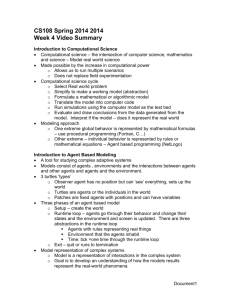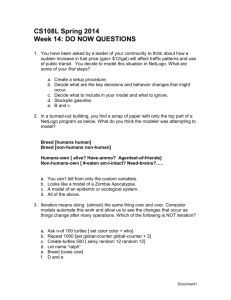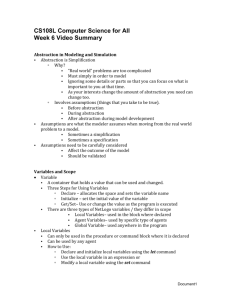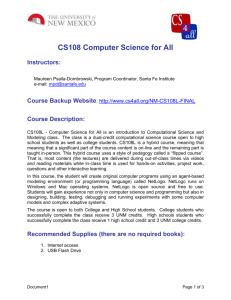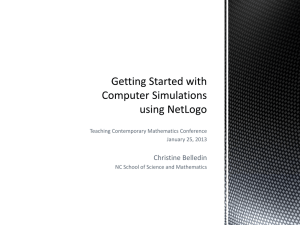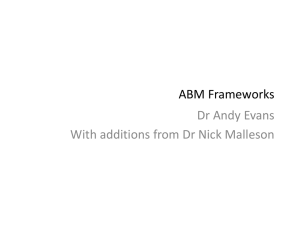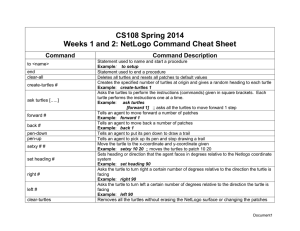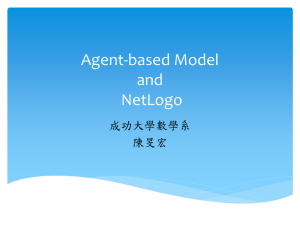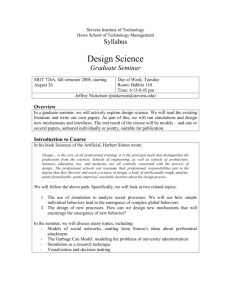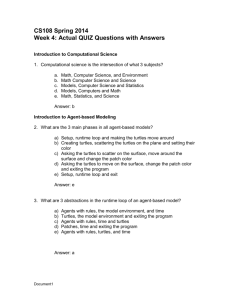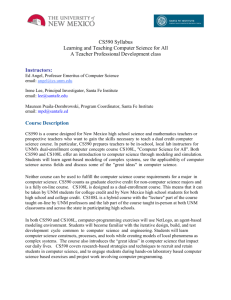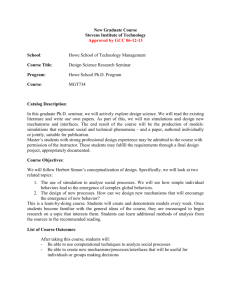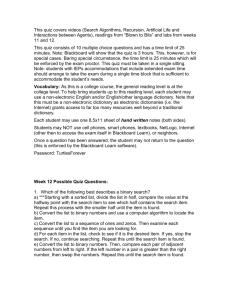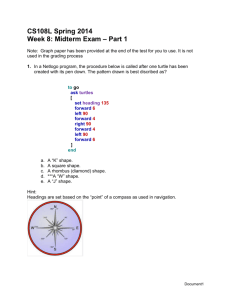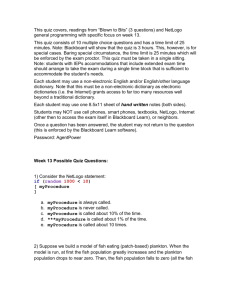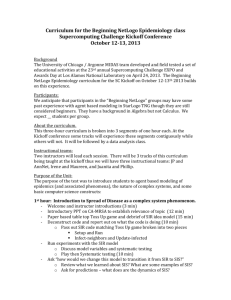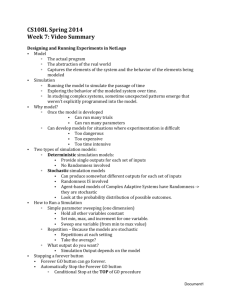Week 1 CS Concepts (.doc) - New Mexico Computer Science for All
advertisement
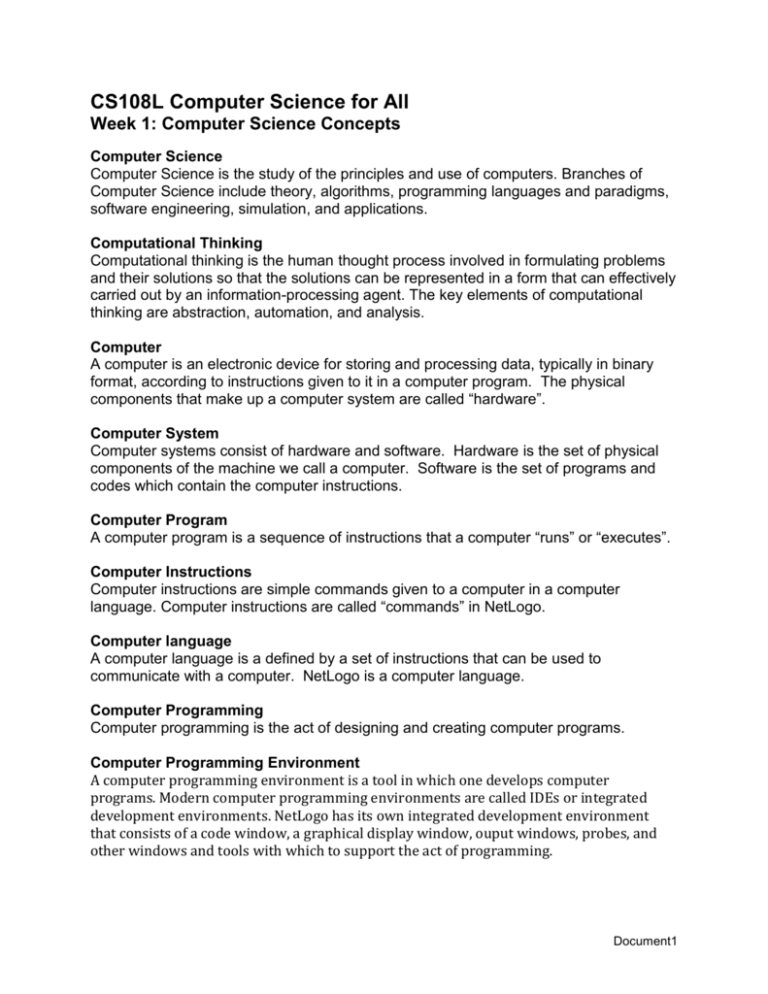
CS108L Computer Science for All Week 1: Computer Science Concepts Computer Science Computer Science is the study of the principles and use of computers. Branches of Computer Science include theory, algorithms, programming languages and paradigms, software engineering, simulation, and applications. Computational Thinking Computational thinking is the human thought process involved in formulating problems and their solutions so that the solutions can be represented in a form that can effectively carried out by an information-processing agent. The key elements of computational thinking are abstraction, automation, and analysis. Computer A computer is an electronic device for storing and processing data, typically in binary format, according to instructions given to it in a computer program. The physical components that make up a computer system are called “hardware”. Computer System Computer systems consist of hardware and software. Hardware is the set of physical components of the machine we call a computer. Software is the set of programs and codes which contain the computer instructions. Computer Program A computer program is a sequence of instructions that a computer “runs” or “executes”. Computer Instructions Computer instructions are simple commands given to a computer in a computer language. Computer instructions are called “commands” in NetLogo. Computer language A computer language is a defined by a set of instructions that can be used to communicate with a computer. NetLogo is a computer language. Computer Programming Computer programming is the act of designing and creating computer programs. Computer Programming Environment A computer programming environment is a tool in which one develops computer programs. Modern computer programming environments are called IDEs or integrated development environments. NetLogo has its own integrated development environment that consists of a code window, a graphical display window, ouput windows, probes, and other windows and tools with which to support the act of programming. Document1 Computer Model A computer model is a representation of a real-world phenomenon that is built and developed on a computer. Computer simulation is the execution of a computer model. Computer Modeling and Simulation A branch of computer science in which computer scientists and others build and test computer models to enable the study, investigation and perhaps solution to real-world problems through repeated virtual trials of what-if scenarios. Turtle Graphics Turtle graphics is a name for a set of simple graphics commands often used when first learning how to write a computer program in a Logo-based language. Program Execution Before the program is run or “executed”, it is loaded into the computer’s working memory or RAM. All computer programs take in input and produce output. During execution each instruction contained in the program is carried out in order. Program State When a computer program is executing, at each slice of time, the executing program has a “state”, or a snapshot of all the information that is stored in memory at that instant in time. State typically includes a pointer to the instruction to be executed next and the values kept in different memory locations. Agent An agent is a type of object in a computer model. There are three types of agents in NetLogo: turtles, patches, and links. Turtle A turtle is a type of agent in an agent-based model. Turtle attributes or states Each turtle has attributes or states that are specific to it. Some examples are shape, xcoordinate, y-coordinate, color, heading, etc. Heading - the direction, given in degrees that a turtle is facing in a model. Default value - a value that the NetLogo assigns to a variable or state when the programmer hasn’t chosen a value. GUI (Graphical User Interface) - a type of user interface that allows users to interact with electronic devices or input data, instead of by typing commands. Setup procedure A procedure that creates and initializes the world in NetLogo. Document1 Go procedure A procedure that runs the model is often called the Go procedure. Syntax The rules of using a language are called its syntax. Reserved Word - a word that cannot be used as an identifier, such as a name of a variable or procedure, because it already has a built-in meaning in the programming language being used. Syntax Error - a programming error where the sequence of characters is wrong, For instance, “ask turtles” is a syntax error for what was meant to be “ask turtles”. Logic Error - a programming error that produces unintended or undesired output. Unlike with a syntax error, the program will still run. For instance, “a + b/2” is a logic error for what was meant to be “(a + b)/2”. Statements or Commands in NetLogo The smallest independent unit of code. They produce an action. Expressions The smallest unit of calculation. They represent or evaluate to a value. Document1

